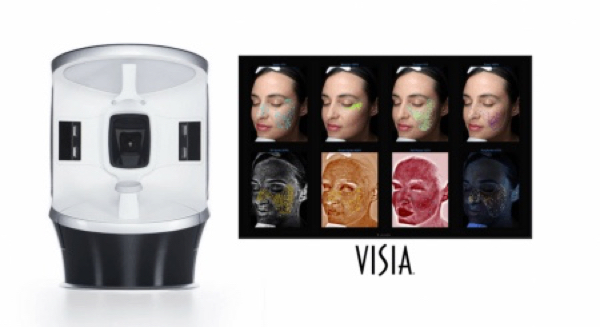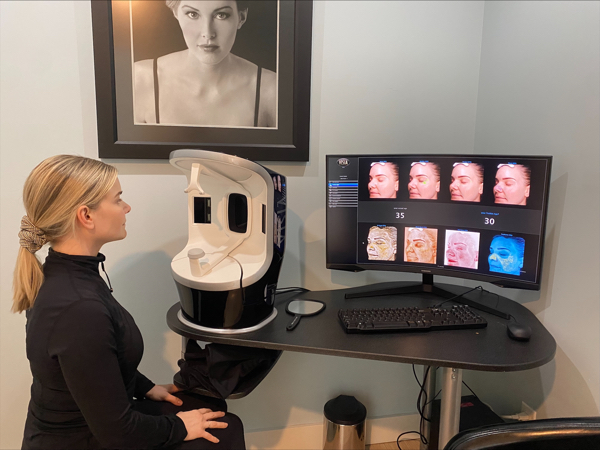
What is the Visia skin analysis?
VISIA is an in-depth analysis of your individual facial characteristics. It lets you see the benefits of skin care programs planned for your specific complexion.
How does the Visia skin analysis work?
The VISIA will scan your skin, looking at its strengths and weaknesses. VISIA scans measure your skin pigmentation, pore size, and porphyrins (evidence of bacteria lodged in pores). It also scans UV spots, sun damage, texture, and wrinkles. With this assessment of your skin, we can compare your skin condition within your peer group. This helps us develop a more targeted treatment program for your specific needs, while also tracking your progress and treatment outcomes over time.
What can I expect during my appointment?
At Cosmedics Medical Spa, we offer VISIA skin analysis as a complimentary addition to our gallery of treatments. Our Medical Estheticians will sit you in front of the VISIA system and the process of scanning your face will begin.
VISIA captures left, right, and frontal facial views, giving us a clear picture of your skin. In minutes, you will be able to view your scans on the computer screen. Your first analysis will become the baseline for your treatment progress. You will be able to view your own before and after pictures and see for yourself how your skin treatment plan is helping you.
What are the definitions of the various skin features and how are the features detected?
Spots : Spots are typically brown or red skin lesions including freckles, acne scars, hyper-pigmentation and vascular lesions. Spots are distinguishable by their distinct color and contrast from the background skin tone. Spots vary in size and generally have a circular shape.
Pores
Pores are the circular surface openings of sweat gland ducts. Due to shadowing, pores appear darker than the surrounding skin tone and are identified by their darker color and circular shape. The VISIA system distinguishes pores from spots based on size; by definition, the area of a pore is much smaller than a spot.
Wrinkles
Wrinkles are furrows, folds or creases in the skin, which increase in occurrence as a result of sun exposure, and are associated with decreasing skin elasticity. This skin feature has the greatest variability from image to image as it is highly dependent upon the facial expression of the client. Wrinkles are identified by their characteristic long, narrow shape.
Texture
Texture is primarily an analysis of skin smoothness. Texture measures skin color and smoothness by identifying gradations in color from the surrounding skin tone, as well as peaks (shown in yellow) and valleys (shown in blue) on the skin surface that indicate variations in the surface texture.
Porphyrins : Porphyrins are bacterial excretions that can become lodged in pores and lead to acne. Porphyrins fluoresce in UV light and exhibit circular white spot characteristics.
UV Spots
UV spots occur when melanin coagulates below the skin surface as a result of sun damage. UV spots are generally invisible under normal lighting conditions. The selective absorption of the UV light by the epidermal melanin enhances its display and detection by VISIA.
Red Areas
Red Areas represent a potential variety of conditions, such as acne, inflammation, Rosacea or spider veins. Blood vessels and hemoglobin contained in the papillary dermis, a sub-layer of skin, give these structures their red color, which is detected by the RBX Technology in VISIA. Acne spots and inflammation vary in size but are generally round in shape. Rosacea is usually larger and diffuse compared to acne, and spider veins usually are short, thin and can be interconnected in a dense network.
Brown spots
Brown Spots are lesions on the skin such as hyper-pigmentation, freckles, lentigines, and melasma. Brown Spots occur from an excess of Melanin. Melanin is produced by melanocytes in the bottom layer of the epidermis. Brown Spots produce an uneven appearance to the skin, and are detected in VISIA by RBX.

